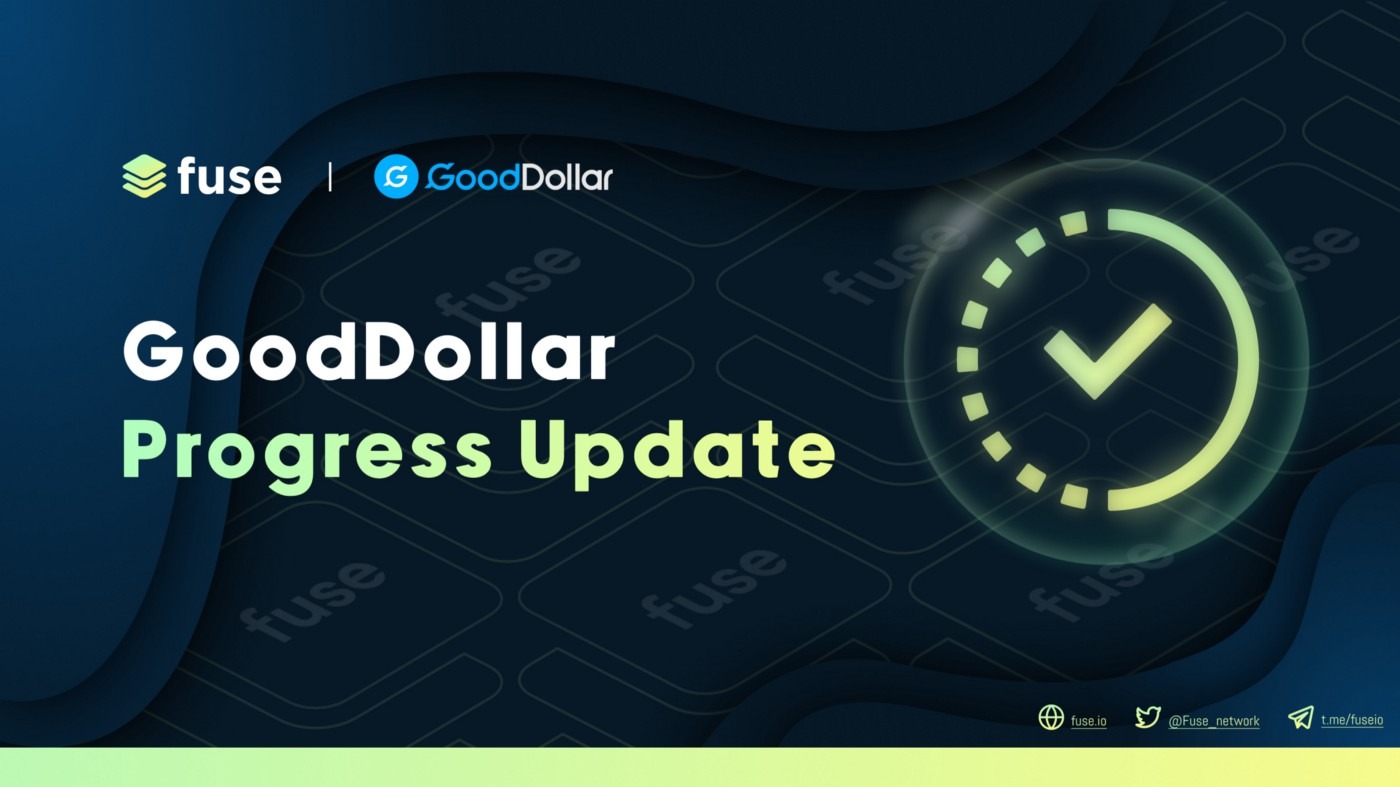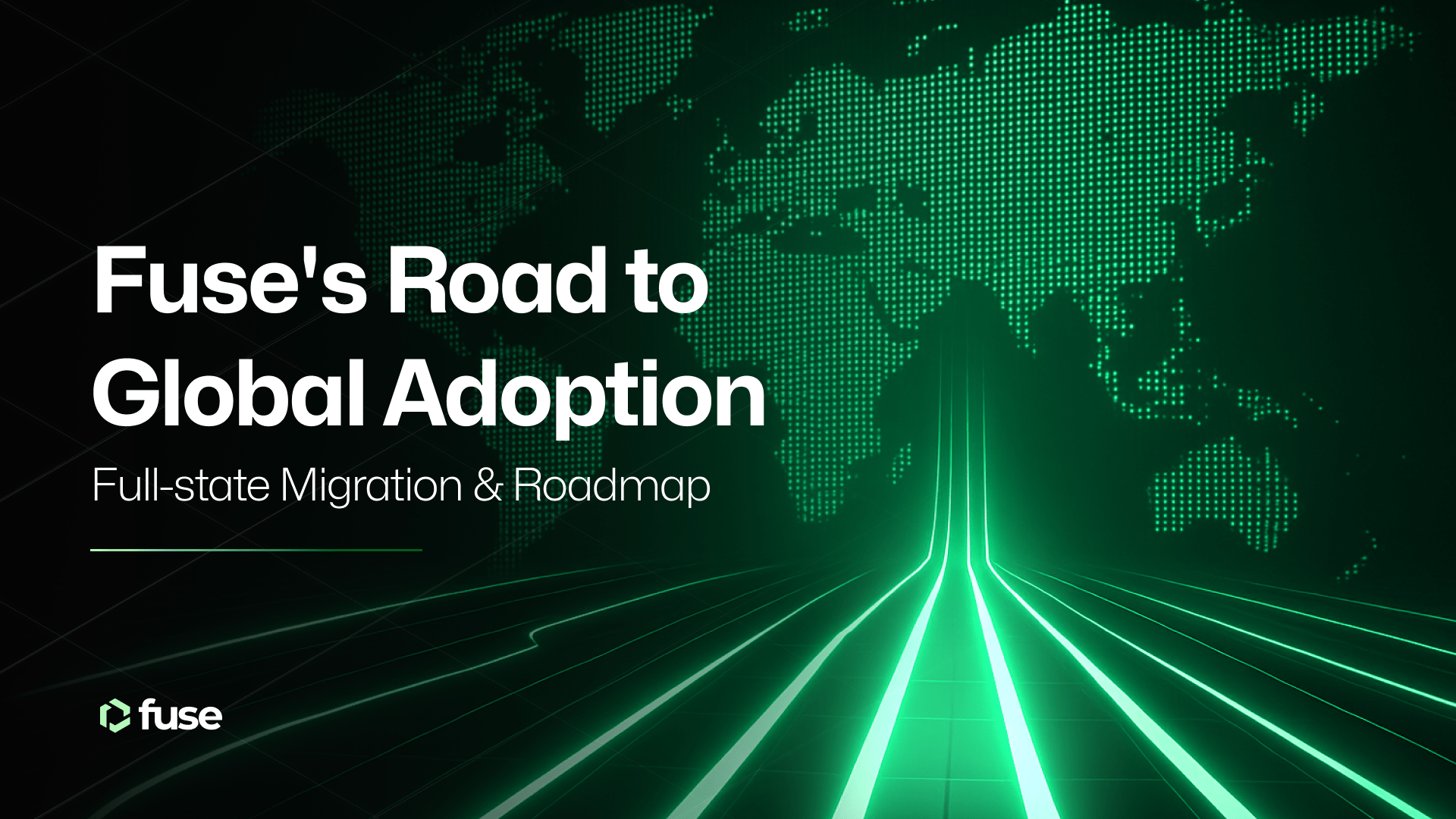Leading Fuse ecosystem project GoodDollar has come a long way since its launch in 2020. This article summarizes its recent progress, including the launch of DeFi-friendly V2, the introduction of decentralized governance via the GoodDAO, the introduction of a new roadmap and a surge in global membership to nearly 400,000.
The eToro-backed GoodDollar project has been at the forefront of Fuse’s ecosystem growth since the launch of the Fuse platform.
GoodDollar is a decentralized impact project whose vision is to help channel the potential of blockchain technology for the greater good. To achieve this, GoodDollar uses the power of the blockchain to sustainably generate free crypto for members in every corner of the world.
First, supporter funds are deposited and held in major decentralized finance (DeFi) protocols to generate interest, which is then used to back the minting of the project’s native G$ tokens.
The latter are distributed as digital basic income to claimants all over the world via GoodDollar’s web and mobile wallet apps. Anyone with a mobile phone and an Internet connection can create an account on the platform and claim G$.
While the revenue-generating activities of the GoodDollar protocol have been mostly confined to DeFi protocols on Ethereum, the project has benefited from the start from the fast and low-cost Fuse Network blockchain for the distribution of G$ among digital basic income seekers. GoodDollar’s token-powered decentralized governance, which we discuss below, also partly runs on Fuse Network.
In structuring its activities in this manner, GoodDollar provides a nice illustration of how Fuse is set to run alongside Ethereum and other major blockchain platforms in the future. The Fuse community is always ready to benefit from the opportunities available on other chains, while trying to maintain a particular focus on providing highly competitive rails for crypto payments.
GoodDollar’s embrace of DeFi
The initial funds supporting the G$ distributed to users were staked by eToro. With the launch of V2 of the protocol, the option of staking in support of the UBI mission is now available to all DeFi users. Supporter funds are deposited in interest-generating protocols, and the returns they produce flow into the GoodDollar Reserve to support G$ issuance.
Specifically, instead of just staking crypto assets with the USDC pool on Aave or the DAI pool on Compound directly, DeFi participants can do the same via GoodDollar to become stakers. The interface for staking is available here.
Supporters are rewarded with G$ tokens equivalent to the interest generated by their deposit. They can, however, waive these rewards, in which case the resulting G$ stays within the reserve to help fuel the digital basic income scheme.
The staked crypto assets can be withdrawn at any time, while G$ tokens can be directly exchanged for the assets held in the protocol’s reserve.
Governance decentralization
In conjunction with the launch of V2, GoodDollar also transitioned to a decentralized governance model via the GoodDAO. Participation in governance is based on non-transferable GOOD tokens that are issued to protocol participants depending on their level of contribution and activity. Each GOOD token represents one vote and GOOD can be claimed both on Ethereum and Fuse Network blockchains.
GoodDAO members can vote on any matter related to the functioning of the GoodDollar platform. While GOOD tokens cannot be permanently transferred, the voting power they confer can be delegated to another GoodDollar community member. A member directly or indirectly controlling more than 0.25% of the circulating supply of GOOD can put forward a governance proposal and the quorum for its initial screening is 3% of votes in favour provided the proposal received less than 3% of “no” votes. After initial screening is complete, proposals are subject to majority voting with a countdown period.
Platform growth
Since its launch in August 2020, GoodDollar has distributed $84K in G$ to almost 400K claimants globally. There have been more than 121K active claimants over the last 14 days.
For many months straight, GoodDollar has consistently featured in the top ten of the decentralized applications by the number of daily users across all the blockchains tracked by DappRadar.
Recently, the platform has seen a fresh surge in user growth. The number of daily claimers rose from an average of around 40K to a record high of 62K on May 6.
To support its growing user base, the project has introduced adoption-focused initiatives such as the Ambassador Program, a bounty program for tech contributors and the GoodDollar Marketplace.
A new roadmap
In addition to its already impressive track record, the GoodDollar project has announced a set of exciting planned improvements and initiatives in its recent roadmap article.
These include a grant program aimed at boosting G$-based entrepreneurship and rewarding users who invent new ways to increase the utility of G$, the launch of an upgraded GoodDollar Marketplace, the extension of the interest-generating component of the protocol to other blockchains and so on.
GoodDollar and Fuse
The Fuse team is excited to have GoodDollar among our ecosystem projects, and we are constantly on the lookout for new ways of bolstering growth in the project and encouraging the adoption of its token.
Beyond powering GoodDollar’s basic income distribution and governance via the Fuse Network blockchain, in conjunction with the Voltage Finance DeFi platform, Fuse has been working on incorporating the G$ token into DeFi on our platform. Currently, G$ is actively traded on the G$/FUSE pair on Voltage and the liquidity provision on the pair is incentivized via a yield farming program. G$ can also be conveniently purchased via the in-app swapping functionality in the Fuse Cash mobile wallet.
Please stay tuned for more updates about these and upcoming initiatives co-sponsored by Fuse and GoodDollar.
Follow our social media channels to stay updated on recent news and developments at
.svg)
.svg)











